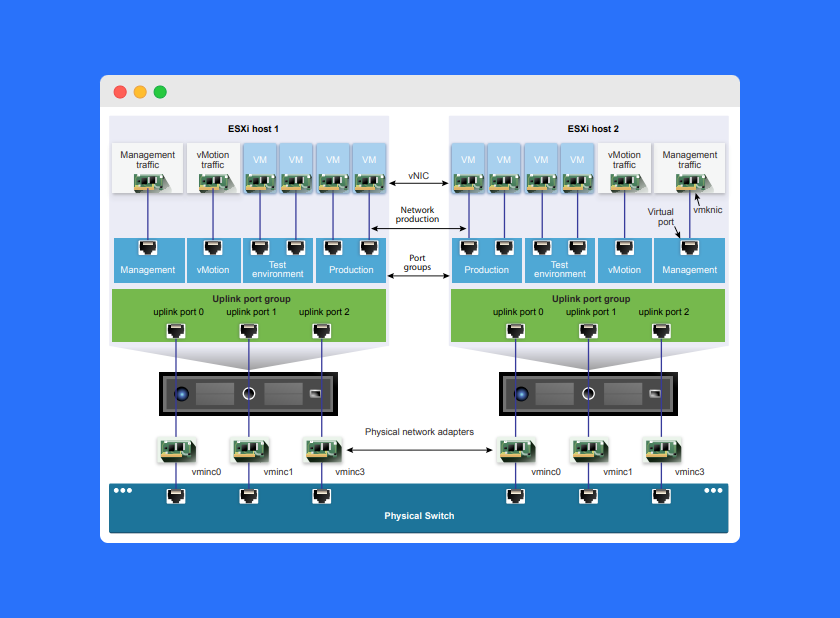A virtual port group (VPG) is a logical grouping of virtual network interfaces (vNICs) that share the same networking properties. It is a key component of virtualization software, such as VMware vSphere, and is used to organize vNICs into logical groups and to apply common networking policies to them.

VPGs are created and managed using the vSphere Client, which is a graphical user interface (GUI) for managing VMware vSphere environments. To create a VPG, you will need to select the virtual switch (vSwitch) to that you want to add the VPG, and then specify the VPG name, VLAN ID, and other networking properties. You can then add vNICs to the VPG by selecting them from the vSphere Client and assigning them to the VPG.
There are several benefits to using VPGs in a virtualized environment:
- Flexibility: VPGs allows you to create and manage virtual networks in a flexible and scalable way. You can easily add or remove vNICs from VPGs and apply different networking policies to them as needed.
- Efficiency: VPGs help to increase the efficiency of virtualized environments by allowing VMs and other virtual devices to communicate with each other and with physical networks in a more efficient way.
- Security: VPGs can be used to apply security policies, such as access control lists (ACLs), to vNICs to help protect against unauthorized access and other security threats.
- Quality of Service (QoS): VPGs can be used to apply QoS settings to vNICs to help ensure that critical applications receive the necessary network resources and performance.
Table of Contents
Working with the virtual port group?
To understand how a VPG works, it is helpful to think about how a physical network switch works. A physical network switch is a hardware device that connects devices on a network and forwards packets of data between them based on their MAC addresses. It receives incoming packets of data on one port and forwards them to the appropriate port based on the MAC address of the destination device.
A VPG performs a similar function, but it is a software-based component that runs within a virtualization host. It receives incoming packets of data on one vNIC and forwards them to the appropriate vNIC




